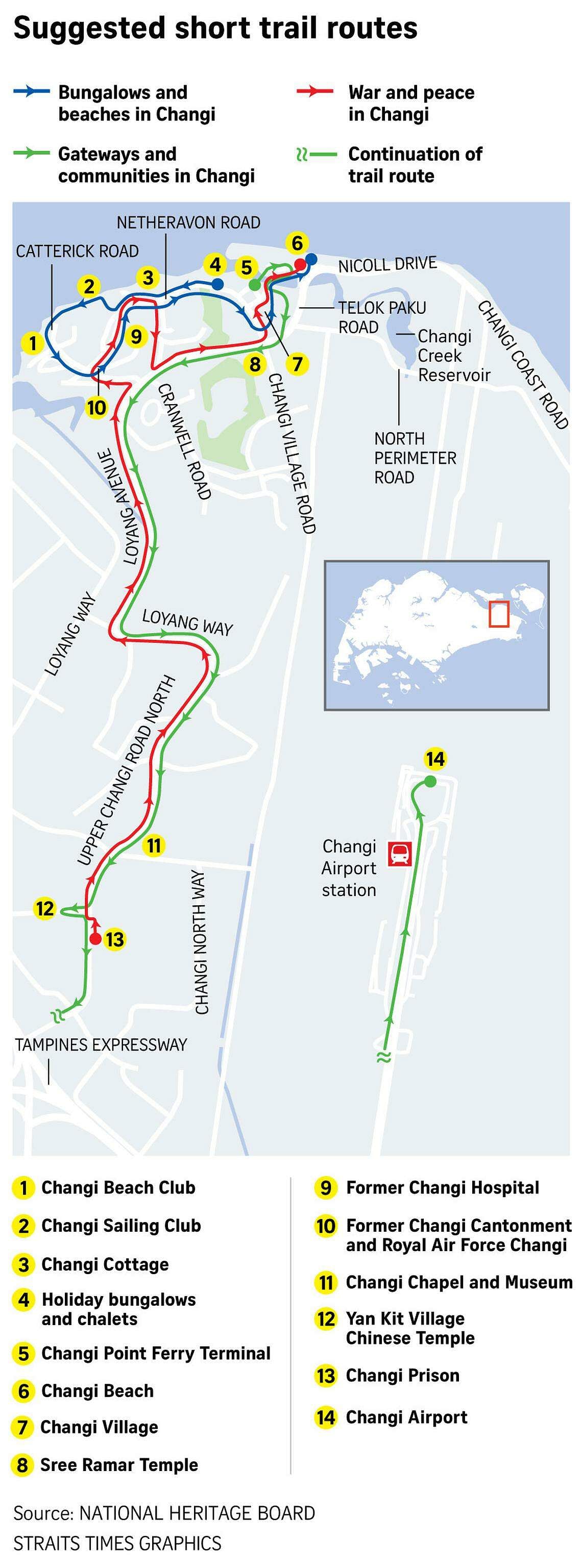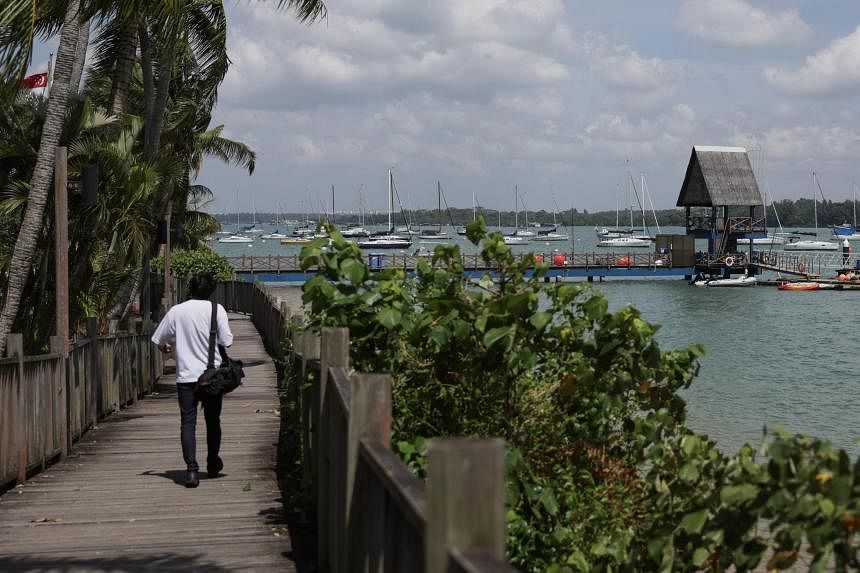SINGAPORE – On mornings when the fishermen of Kampong Ayer Gemuroh – a now-defunct village located where Changi Airport stands – returned to shore, the beach would turn into a fish market.
“Everybody would help to pull the sampans (small boats) up the beach when the fishermen returned, and the makciks (aunties) would be there waiting with their baskets,” said author Isiah Majid, 62, who lived in the village from 1962, when she was born, to 1974.
“They would rush to the fishermen, pick the fish that they wanted and bargain for the best price.”
While Kampong Ayer Gemuroh may have made way for the development of Changi Airport in the 1970s, and the airport police division now stands in its place, Madam Isiah’s memories of the kampung have been documented in a guide for the National Heritage Board’s (NHB) latest heritage trail launched on March 26.
The Changi Heritage Trail features 23 sites that recall Changi’s history and the diverse narratives associated with it, such as World War II, Changi Beach’s coastal and recreational heritage, as well as the area’s present-day role as Singapore’s aviation hub.
Twenty-two stories from community members such as Madam Isiah are found in the guide.
While six of the 23 sites, including Kampong Ayer Gemuroh, cannot be visited, their histories are still documented in the guide. The public also has no access to sites such as Changi Prison or the bungalows near Changi Beach, but these places of interest can be observed from the outside.
To cater to the public’s varied interests, NHB curated three thematic routes for the self-guided trail. Participants can opt to take public transport to reduce the distance covered on foot for each route.
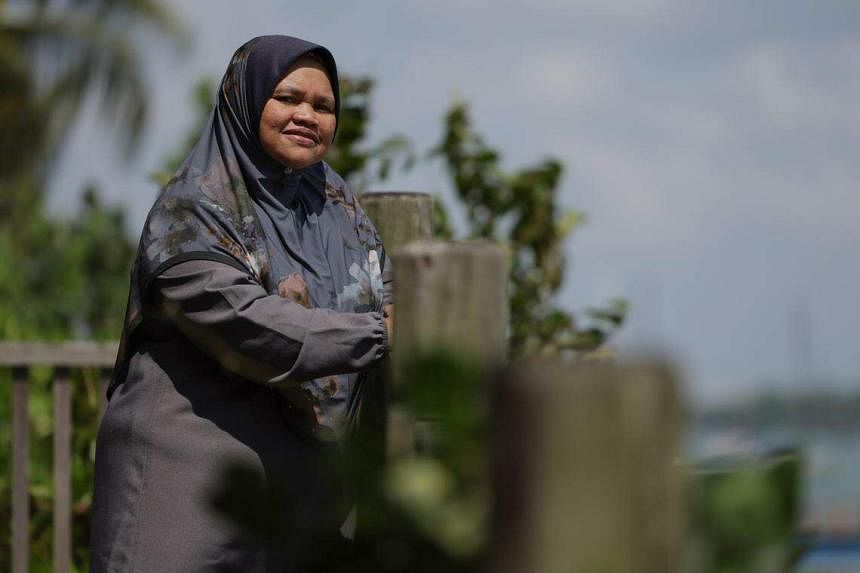
The first route, Bungalows And Beaches In Changi, covers about 4km around the area’s coastline, taking visitors by recreation clubs, decades-old chalets and the coastal views that have drawn holidaymakers to Changi since the mid-1800s.
Along the way are Changi Cottage, which the late founding prime minister Lee Kuan Yew once called home for a few months, and chalets at Fairy Point that date to the late-1920s, when they were built as accommodation for senior British military officers.
The second thematic route, War And Peace In Changi, takes participants over about 7.6km, starting from Changi Prison.
NHB said that in the 1920s, the British chose Changi as the site for a cantonment, or military quarters, and artillery emplacements to protect a then upcoming naval base in Sembawang.
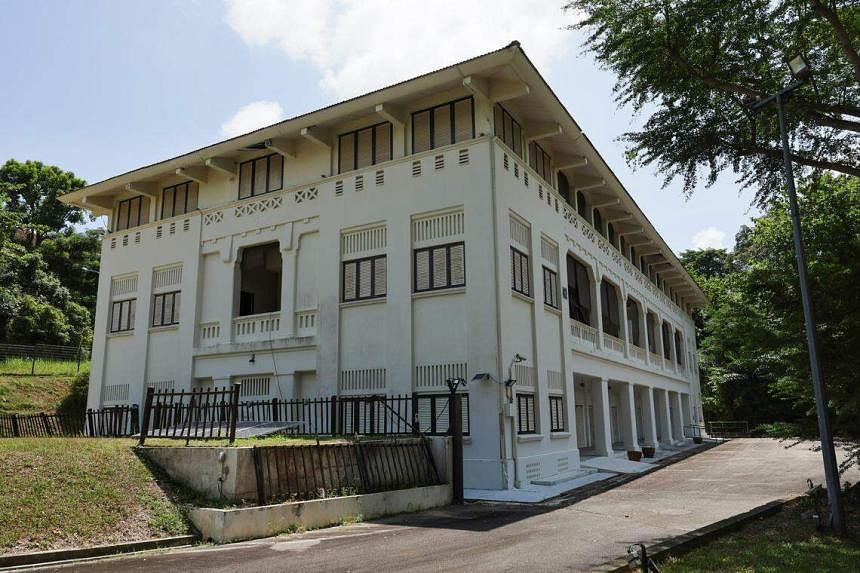
Barracks that were part of the cantonment – such as Block 42 in Hendon Road – are part of this route, along with the former Changi Hospital, completed in 1962 for the British Royal Air Force.
Also remembered are darker periods of Changi’s history. Changi Beach, one of many sites where the Japanese carried out the Sook Ching massacre during WWII, closes off the route.
The newly refreshed Singapore Navy Museum – accessible from Changi Beach by public transport – is an optional extension to this route.
The third route, Gateways And Communities In Changi, delves into the communities that lived and worked in the area.
Of note are two temples with decades-long connections to the area.
Yan Kit Village Chinese Temple, a Taoist temple near Changi Prison Complex, was founded in 1939 by residents of the former Yan Kit village, located in the area.
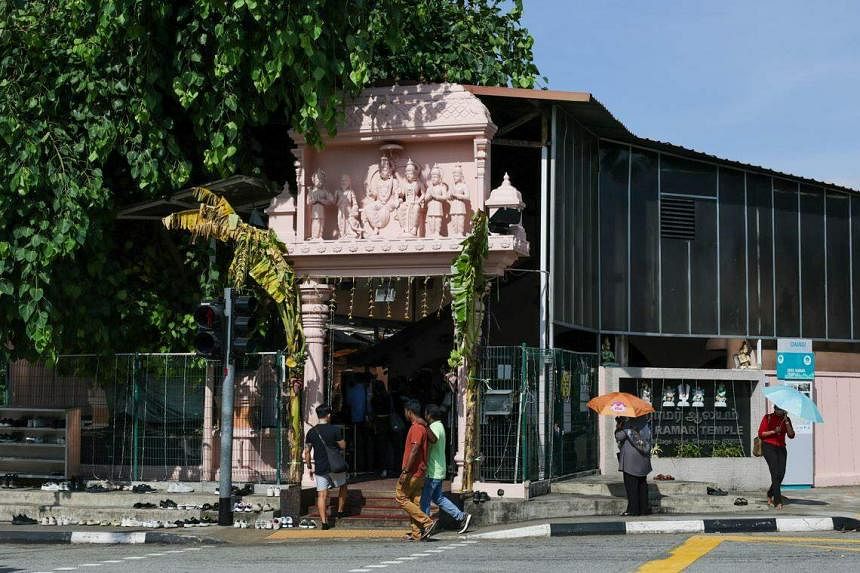
Meanwhile, Sree Ramar Temple, completed in 1946, has its roots in a tree shrine regarded as sacred by Hindu residents of Changi Point.
Mr Thalapathi K.V, a temple volunteer of about two decades, said the ficus tree still sits at the front of the temple, with two small shrines dedicated to Buddha and Guan Yin at the base of the tree. This is a rarity in Hindu temples here and a testament to the multiracial appeal of the temple, said the 67-year-old, adding that the shrines were introduced in the mid-2000s.
A former army regular, Mr Thalapathi said he grew up in Changi Village watching British soldiers in nearby camps marching, and then mimicking them, which inspired him to embark on a 37-year career with the Singapore Armed Forces.
Changi Airport, the last stop of this route, officially opened in 1981 and has since become a national icon.
Among the airport’s landmarks is its 81m-tall control tower. Sitting atop the tower is a three-storey bowl-like structure that houses the control cabin.
Mr Joshua Woo, the son of former contractor Woo Chee Yong, who had a hand in building the control tower, said the tower would always remind him of his late father, whose story is also featured in the guide.
The 38-year-old headhunter said his father would never fail to bring up his involvement in the tower’s construction when their family was at the airport. “It’s like just yesterday that he told those stories to us,” he said of the elder Mr Woo, who died in 2016.
Mr Alvin Tan, NHB’s deputy chief executive for policy and community, said the 22 community stories featured in the trail’s guide will help to make historical narratives more relatable to trail-goers and instil a sense of pride in those who contributed their stories and photographs.
“We hope that our community contributors will take on greater ownership of their heritage and become ambassadors for our heritage trails,” he said.
Mr Tan added that NHB will in 2025 refresh two of its 24 trails – Yishun Heritage Trail and Jubilee Walk, an 8km trail curated to mark Singapore’s 50th birthday.
Before launching the Changi Heritage Trail, NHB unveiled the refreshed Ang Mo Kio and Toa Payoh heritage trails in 2023.
Changi Heritage Trail’s guide and map can be downloaded at go.gov.sg/roots-changi-heritage-trail. NHB said the map will be available in the Chinese, Malay and Tamil languages from June.
Limited print copies of the trail’s guide are available at Siglap Community Club, Changi Chapel and Museum, and the Asian Civilisations Museum.
